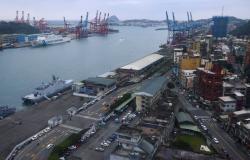The US Navy’s transit through the strait came at a particularly critical time, coinciding with the resumption of high-level military-to-military communications between the United States and China. These talks, which had been on hold since September 2021, are part of an effort to re-establish direct dialogue channels and prevent what many would describe as a ‘cold war’ between the two major powers from turning hot – whether due to mischance, Misunderstood or simple error.
This series of discussions, led for the US by Michael S Chase, deputy assistant secretary of defense for China, Taiwan, and Mongolia, marked the first in-person dialogue since January 2020. The US delegation hosted Chinese army Major General Song Yanchao, deputy director of China’s Military Commission Office for International Military Cooperation.
The agenda was comprehensive, by all accounts, focusing on operational safety and regional stability. Chase emphatically emphasized the United States’ dedication to safe and responsible operations in accordance with international law across the Indo-Pacific, affirming ongoing support for allies and partners within the region being bullied by Beijing.
Pleasingly, as all too often the USA is left to deal with China with little assistance from its Western allies, Germany recently announced its participation in the upcoming RIMPAC (Rim of the Pacific Exercise), the world’s largest international maritime warfare exercise. This year, RIMPAC will feature approximately 750 personnel from 29 nations, highlighting its status as a military ‘big deal’.
Vice Admiral Michael Boyle, commander of the US 3rd Fleet, described the exercise as a platform for building a lasting, combined capability, leading participants to extend their cooperation beyond the biennial event. If diplomacy is the carrot, this is the stick.
The German Navy’s commitment is particularly significant, marking a rare deployment that involves its newest frigate and a replenishment ship. This operation is one of the longest deployments undertaken by the German Navy in the history of the service, illustrating a profound shift in Germany’s focus beyond Europe and towards the Indo-Pacific. Vice Admiral Jan Christian Kaack of the German Navy publicly discussed the historic deployment, highlighting its role in reinforcing Germany’s commitment to the principles of a “Free and Open Indo-Pacific.”
This deployment represents a significant logistical endeavor for Germany. It symbolizes a more robust European presence in Pacific waters, usually the playground of Asian and North American naval forces.
Japan will also play a prominent role in RIMPAC 2024, dispatching its two Izumo-class big decks, JS Izumo and JS Kaga. These pocket aircraft carriers will soon be F-35 able to carry air groups including F-35B fifth generation fighters, and this is their largest deployment to date. This substantial presence will be complemented by additional surface ships and submarines, and the whole point of the effort is to learn to fight and work with allies.






